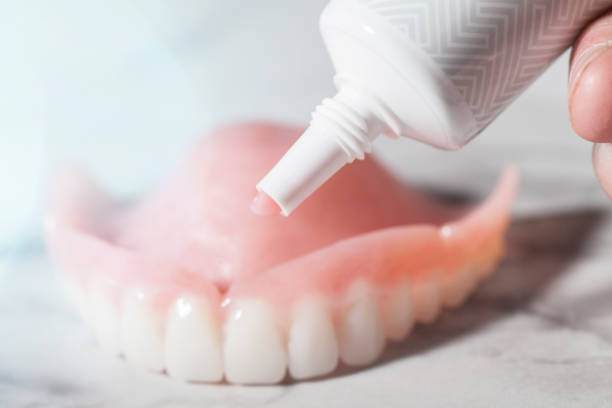
Dentures are an excellent way to regain a full, confident, and functional smile if you are missing several or all of your teeth. However, dentures are also notorious for slipping. This occurs when the natural suction created between your restorations and gums isn’t enough to keep them in place. Luckily, denture adhesive can be used to temporarily help your restorations stick to your gums so they’re more stable. Even so, some people find it a little tricky to use at first. Continue reading to learn some useful tips for using denture adhesive.
3 Reasons Why You Should Use Denture Adhesive
Since dentures are meant to have a close fit to our gums, people don’t usually need adhesive. Even so, these restorations don’t always fit as intended. Though you will need to have them adjusted or remade, there are a few reasons why you may benefit from using adhesive in the meantime, such as:
- Improved confidence – The increased hold that adhesive gives to your dentures will make you feel more confident and comfortable when speaking, eating, and laughing.
- Increased stability – If you have dry mouth, the lack of suction from your saliva will make it difficult for your dentures to stay in place. Using denture adhesive can be a temporary fix.
- Enhance strength – If you have a job that includes a lot of mouth movement such as teacher, singer, or presenter, adhesive can offer improved strength to keep your restorations from slipping when you speak.
How to Use Denture Adhesive
To ensure that your denture adhesive works, you have to use it correctly. There are several different kinds of denture adhesives, including creams, powders, and strips. Before applying any of them, brush and rinse off your dentures. Once they’re done drying, apply the adhesive using the instructions on the package. Press your dentures firmly into place and hold them there for several seconds so they stick to your gums properly. A single application should last a whole day. If it doesn’t, your dentures may no longer fit properly and should be examined by your dentist.
4 Tips for Removing Denture Adhesive
At the end of a long day, remove your denture adhesive so you can put on a fresh coat in the morning. You can do this by:
- Rinsing your mouth out with warm water or a mouthwash
- Removing your lower denture by gently pulling it while gently rocking it back and forth
- Removing your upper denture by pushing your thumb up and out against the front teeth
- Brushing your dentures gently and cleaning your mouth as well
If you have any issues using denture adhesive or removing it from your restorations, make sure to let your dentist know. They will be able to help you properly apply and remove it. They can also adjust or replace your restorations so they fit your mouth as intended.
About the Practice
Dr. Jane C. Puskas and her team of oral health professionals are here to help you and the rest of their Atlanta-area patients keep their smiles looking lovely and functioning at their best. They offer a variety of treatments to keep oral health issues at bay as well as restorative procedures and cosmetic options. They also offer dentures and other tooth replacement options to give you a full, realistic smile. For more information on using denture adhesive or to set up a consultation with Dr. Puskas, call her office at (404) 261-7488 or visit her website.
